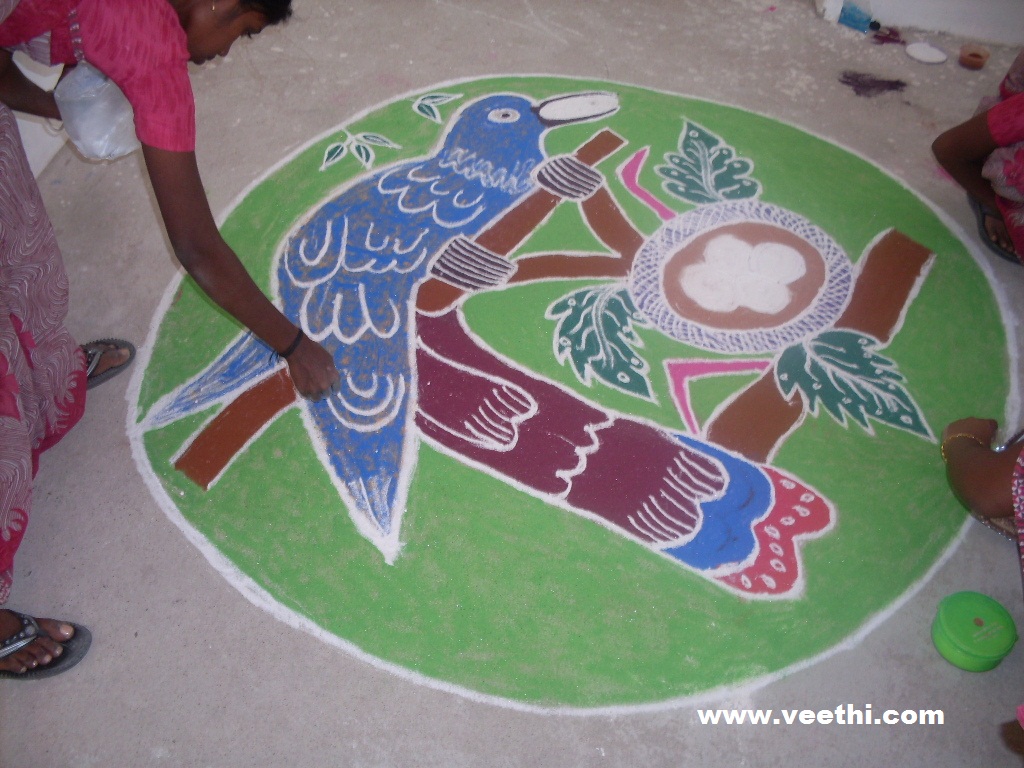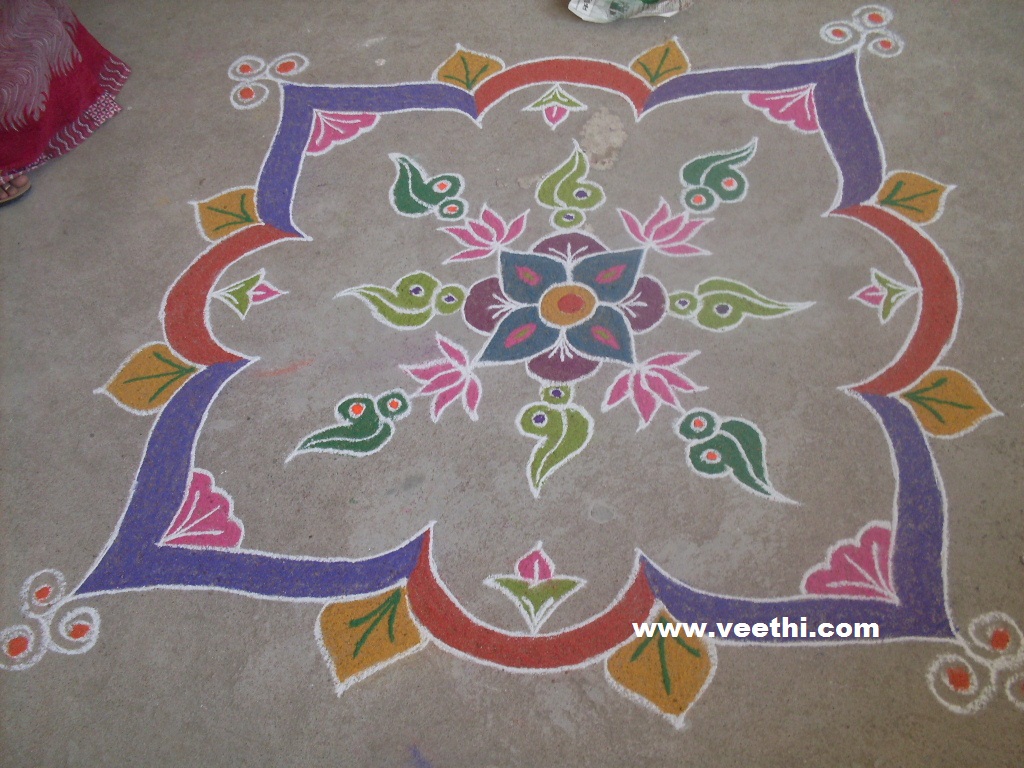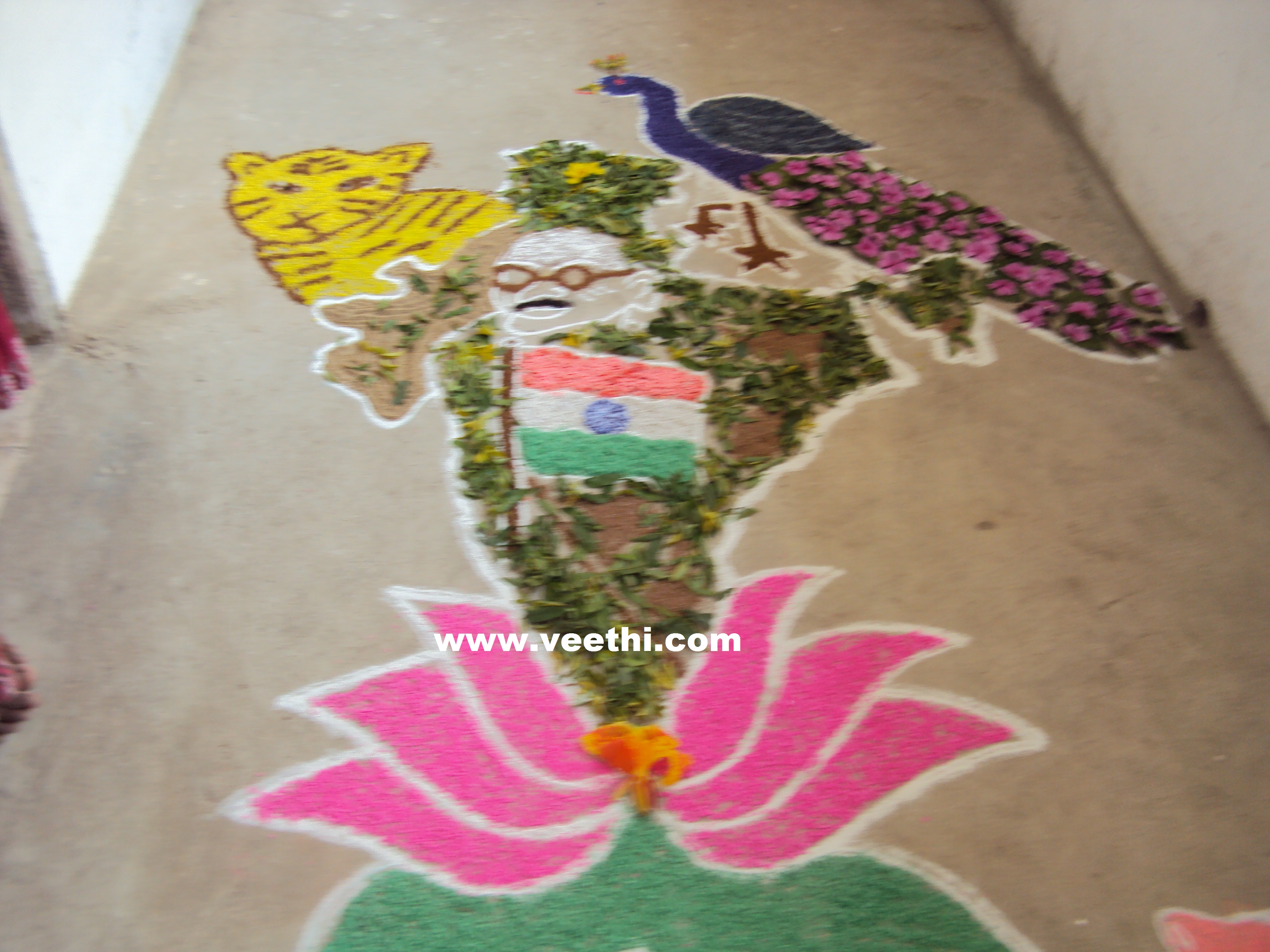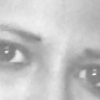Rangoli is a decorative folk art unique to Indian culture. It is a way of decorating the floors and walls with colorful designs. This practice is attributed to Hindu religion and is traditionally done by woman. These are drawn during festival times and other special occasions like marriages and are created with variety of items.
Rangoli is called by different names in different regions. It is known as Kolam in Tamil Nadu, Mandana in Rajsthan, Alpana in West Bengal, Aripana in Bihar, Saathiyo in Gujarat and Chowkpurna in Punjab and Haryana. These flowery designs with geometrically proportionate shapes are considered as auspicious symbols and are supposed to be the harbinger of happiness.
There are many traditional Rangoli patterns that are carried on for generations. There are also numerous books available with different patterns to follow. Innovative and unique Rangoli designs for Diwali, Pongal and other special occasions could be also searched online.
 Usually Rangoli is drawn using rice powder or crushed lime stones and decorated with colored chalk powder. However to give it different shapes and textures, other materials like salt, coarse grains and pulses and many available natural materials are used. They are also decorated beautifully with fresh flowers. There is no fixed size for them and they could be drawn any size big or small to suit the place. Some people prefer painting the patterns near the doorsteps with paints so that they stay permanently.
Usually Rangoli is drawn using rice powder or crushed lime stones and decorated with colored chalk powder. However to give it different shapes and textures, other materials like salt, coarse grains and pulses and many available natural materials are used. They are also decorated beautifully with fresh flowers. There is no fixed size for them and they could be drawn any size big or small to suit the place. Some people prefer painting the patterns near the doorsteps with paints so that they stay permanently.
Apart from traditional Rangoli themes like Deepam, Swasthika, Chakra and Zodiac signs, any natural objects and images of flowers, animals and people are also used. They are drawn in any shape circle, triangles or squares. But usually they are symmetrical and proportionate. The skills of the creator are well brought out in the finished Kolam.
Rangoli is an essential part of Diwali and during the Deepavali celebration, this type of Kolam could be seen in the doorsteps of every home. The name Rangoli is derived from the words Rang and Aavalli. Rang means color and Aavalli means row in Hindi language. It is believed that Rangoli has its origin in Maharashtra though it is in practice in almost all the places of India.
Rangoli competitions are held in schools, colleges and cultural centers. It demands high creativity and imagination. During competitions, very beautiful Kolams with different themes are drawn. Some patriotic themes are also selected. The faces of freedom fighters are naturalistically drawn in Rangolis by skillful hands.
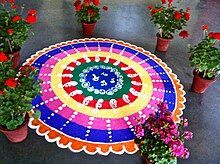 In olden days people used natural dyes obtained from barks of the trees and leaves to add color to these Kolams. Nowadays synthetic dyes are available in all colors. Both wet Rangolis and dry Rangolis are drawn. The floor is cleaned and the outline is drawn using a piece of chalk and over that the chalk powder is used to draw the borders. It is amusing to watch the powder slipping between the thumb and forefinger with ease to give beautiful shapes. It is indeed a laborious process and need some training to make it perfect.
In olden days people used natural dyes obtained from barks of the trees and leaves to add color to these Kolams. Nowadays synthetic dyes are available in all colors. Both wet Rangolis and dry Rangolis are drawn. The floor is cleaned and the outline is drawn using a piece of chalk and over that the chalk powder is used to draw the borders. It is amusing to watch the powder slipping between the thumb and forefinger with ease to give beautiful shapes. It is indeed a laborious process and need some training to make it perfect.
Some types of Rangoli involve free hand designs. Usually the animal figures and themed Rangoli are drawn in this way. It is usually done by a group of women. Those who are good at drawing draw the outer shape and others add color to it. However the traditional Rangoli designs are drawn with the help of dots. There are lots of books to guide in this process. These are also called Pulli Kolam.
The tradition of drawing bigger sized beautiful Rangoli in the Tamil month of Markazhi is followed in Tamil Nadu. This is usually created by unmarried girls early in the morning based on the mythological story of Andal marrying Lord Thirumaal. During Onam festival in Kerala, Rangoli is drawn with flowers and is known as Onam Pookalam or Athapookkalam.
If you want to know how to draw a Rangoli, here is an example with illustration. Peacock Rangoli is very famous as it naturally looks very beautiful with colorful feathers. The one seen below won prize in the college competition. Full rice is mixed with green color powder and used in this to give a different texture and half cut brinjals are used for the plumes of the peacock. The coarse salt is mixed with color powder to form the body of the peacock. The fallen feathers of the original bird are collected and are mixed with colors to form the upper portion of the body of the peacock. And the original slender branch of the tree is cut with leaves and placed here to make the peacock appear as though it is naturally sitting on the branch of a tree. Only sky is the limit for the imagination and if you have good creativity you can draw any such objects as Rangoli.
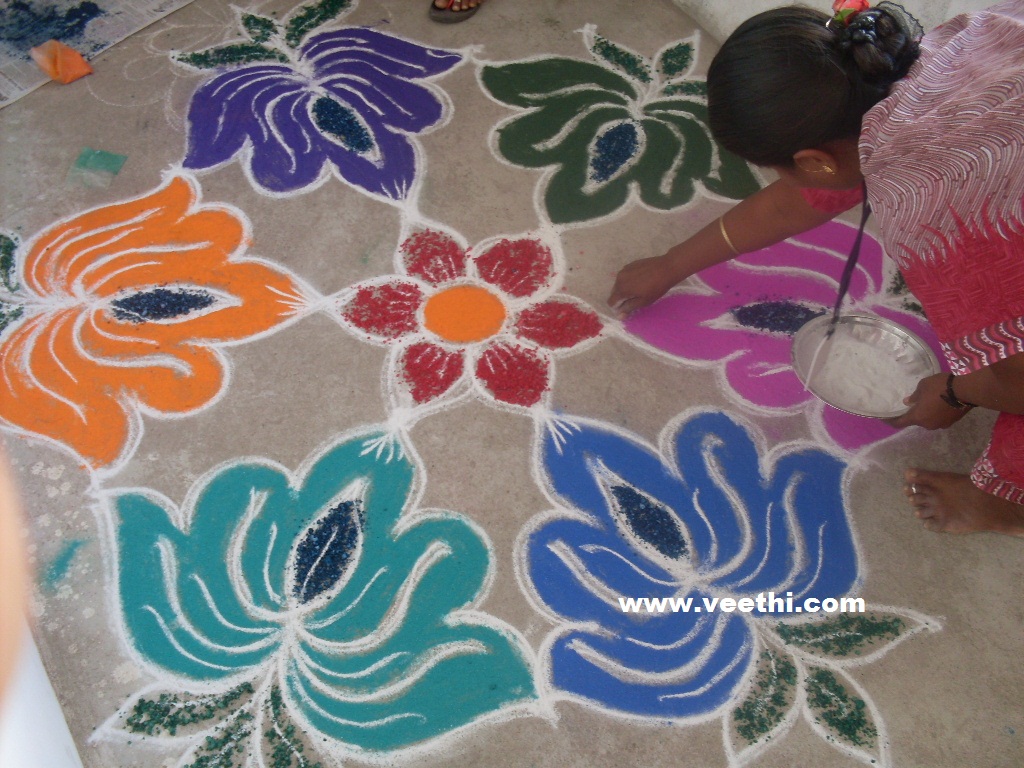
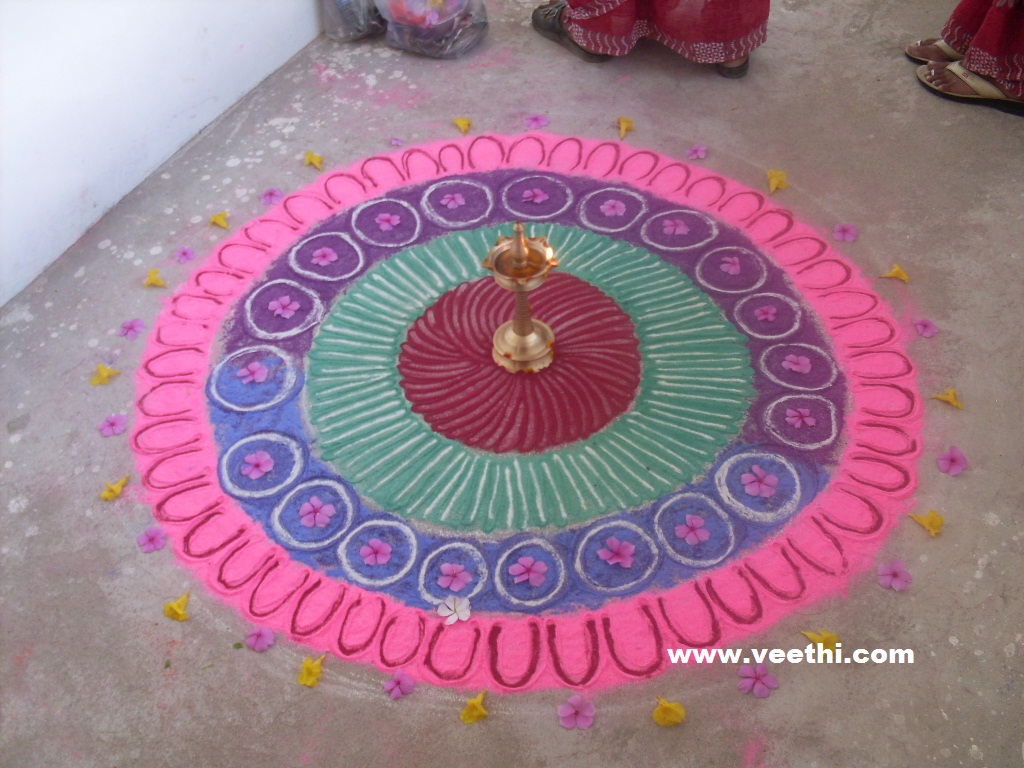
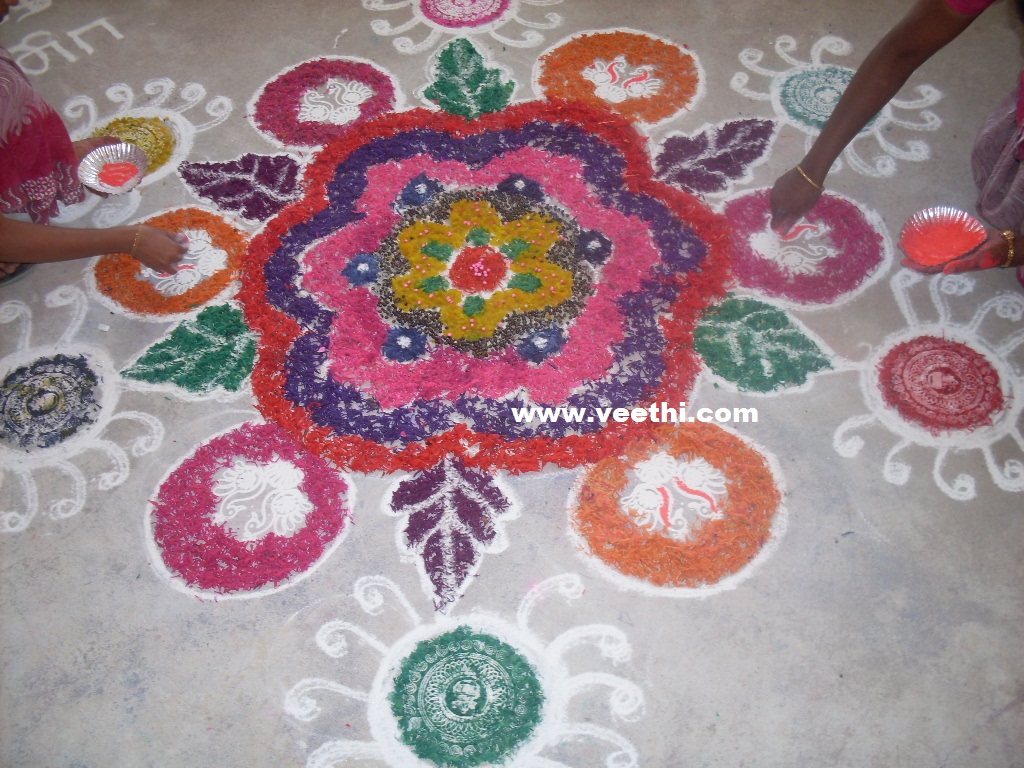




Article Source :
http://www.veethi.com/articles/rangoli---kolam-for-festivals-like-diwali-and-pongal-article-1199.htm
Keywords :
Rangoli
,
culture of India
,
Kolam
,
Diwali
,
Pongal
,
peacock rangoli
,
vegetable rangoli
,
rangoli patterns




